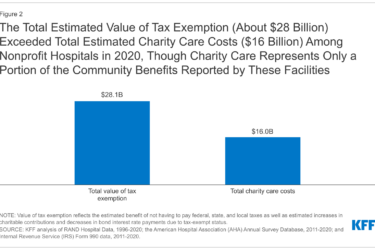
A couple of stories have begun to trickle out from states about the impact of Medicaid expansion on hospitals.
This one from the Arizona Daily Star by Stephanie Innes, for instance, reports that uncompensated care dropped by a third in the first four months of 2014 from the prior year – a pretty significant number. The hospitals in that period wrote off $170 million in 2014, versus $246 million from Jan through April in 2013.
She uses data from the state’s hospital industry to report on uncompensated care (both bad debt and uncompensated care) and the hospitals’ bottom line.
“The Arizona hospital report shows the average operating margin of Arizona hospitals has gone up from 4 percent in 2013 to the current rate of 5.2 percent — a signal to some health experts that the Affordable Care Act will be a net positive for hospitals’ bottom lines,” she wrote.
It’s not a long story but Innes packed in the highlights of Arizona’s enrollment efforts and the intense political battle that Gov. Jan Brewer – one of the first conservative governors to embrace expansion and to really fight for it – endured. Nearly one in four people in the state are now covered by Medicaid.
The Star helpfully posted the Arizona Hospital and Healthcare Survey.
Here’s a similar story from The Coloradoan, looking at early national trends and how that state was faring. It found a rise in payments and a fall in charity care after Colorado expanded Medicaid. (Here’s a fact sheet from the Colorado Hospital Association giving some more detail for that state.)
This hospital story is a great angle in any state – expansion or nonexpansion – and how the two compare, particularly in states where Medicaid has been a sharp political battle. There is clearly an on-the-ground economic impact. State hospital associations are keeping tabs on this (although they may not all have collected and crunched numbers to the extent Arizona has) and the Advisory Board also has resources on this topic.









